The following day was a day of mainly on the road. We went to Matmata (Arabic: مطماطة Maṭmāṭah), a small desert town hidden amongst the hills in southern Tunisia where about 2000 people live in the traditional underground caves dug out from the sides of the dry yellow earth. The people there were Berbers, the oldest original inhabitants of North Africa who are thought to have been living there since the Roman times. Their homes, called "troglodytes" , are a bit like those found in the loess caves in Shenxi, China. Each such house has several rooms, some used as storehouse, others as bedrooms connected sometimes connected to each other by underground tunnels. They got no kitchens. They cook their food in earth stoves a little distance away from their where they live. So are their latrines. They got their water from wells dug deep into the earth. But now, they got government supplied water. It is said that for centuries, no one knew that they were until 1967 when there was a huge flood lasting 22 days which inundated such underground homes and the locals were forced to seek Government help. Since then some above ground homes have been built but the majority of the local rebuilt their own homes because they were used to this way of living. According to their oral history, their ancestors thought of this way of hiding from the Egyptian tribes sent by the Romans to kill them during the Punic War. Like ghosts which came from nowhere, they would emerge stealthily and quietly from their hideouts during the night to attack their enemies some distance off and kill them off and then immediately went back to their caves. This strategy proved so successful that they had remained there ever since.
We started quite early and had to drive several hours. The restaurant where we had our rest stop for a coffee before we reached Matmata
We did not have very many choices
It's very barely furnished: its doors and windows are painted "blue", like so many others houses in Tunisia
The desert behind through a wire mesh
They appear to have a special fondness of plain primary colors
On the floor of the terrace outside the restaurant, they got some local pottery for sale
One of the pots
The patterns on one of the trays
And hand painted and fired tiles
One of the tiles
Some paintings
Another painting
and also some "desert roses"
one of the petals of the desert rose
The cactus in the courtyard
Cactus fruit
We were first brought to visit a Berber family where we were given a tour of her house and were given a "taste" of how the locals would eat their "tabouna" bread dipped in a mix of wild honey and olive oil and drink their herbal tea. This is the sitting room of the family who prepared the herbal tea and their local "tabouna" bread, which looks and tastes a bit like the "pita" bread eaten by the Indians..
This is one of their storerooms.
This is another
This is the passage leading to the entrance of the cave house

This is an alcove in the courtyard where the Berber women would sit out in the open if they want to look at the sky whilst working on their hand-powered stone mill for grinding the fine flour needed for making their traditional "tabouna" bread in their terracotta oven.
This is the type of countryside where such "troglodytes" would be found.
One could see there there are many basins amongst the hills nearby. Many of the houses of the locals are dug out from such 'basins"
The "ticketing office"where we would have a rest break
The reception hall
One of the underground passages
its courtyard. One could see the wooden doors to various rooms in this two-stprey hotel.
This is another "troglodytes" near to where we had our "tea"
Some above ground structures adjacent to our hotel-restaurant, filled with graffiti..
This is a view of one the biggest buildings we found in the region taken from the coach window
A seaside coast we passed through
What we found on our way to Matmata
Near to some of the houses we were to visit, we would find some such make-shift tents made with a few twigs tied to a rock or two and some sack cloth protected by a rush-mat sand guard.
You can see how ramshackle it is: it seems to have been built with whatever materials the Berbers could pick up locally
You can see that no matter how primitive they are, they always have a mat on the floor for sitting
Another view of the tent
We were introduced to one of the local families there. Here we find a cooking basin, a cooking tray and an open air oven where they would prepare their "pita" bread or other food
The entrance to the home we would visit is decorated with just a palm tree stump covered over with a very roughly hand knitted cloth
Some pieces of tree barks tied together with some metal strips serve as door/gate to the entrance to their home
a cast iron "welcome" sign in English : many Berbers now rely on tourism as a means of livelihood
A leather belt and a pad hung on the wall as a wall decoration when not in use, presumably as a protection of the back or as a simple harness on a donkey or a small horse?
.
Some pots for cooking tea or other drinks. The small stove is stored in a separate hole on the wall
Their rooms are barely furnished: they would sit on a mat/rug/carpet. There is a small stove and tea/coffee pot close to the entrance for better ventilation. A cat is resting on the red rug.
A close-up shows the very primitive stove placed on plank presumably to facilitate it being carried around before the fire is extinguished.
Another hollow in the wall will serve as the family loom where the women will make the relevant rugs or carpets.
The house tools are hung on the wall, scissors, pincers, hammer, a hand saw, a chisel, a spanner, a spade, a rake, and a digger, a harness, bucket. etc.. .
A whip, a metal chain, a hook, a bucket, some hand saws

The urn at the corner is decorated with some simple thread or woolen net.
The entrance to the "rooms" are simply decorated with the figure of a hand a two fishes both of them are used as protective amulets. In particular, the open right hand with 5 extended fingers( in Aranic, hamsa= خمسة khamsah /khamsa, literally means 5) has many meanings and in Islam, it means the 5 pillars of Wisdom viz. shahadah (declaring there is no god except God, and Muhammad is God's Messenger), salat ( the ritual of praying 5 times a day), Sawm ( fasting and self-control during the blessed month of Ramadan), zakat (giving 2.5% of one’s savings to the poor and need) and Hajj (pilgrimage to Mecca at least once in a lifetime). The open right hand is an image recognized and used as a sign of protection in many societies throughout history especially it's believed that the hamsa/khamsa to provide a defense against the evil eye. it's a symbol predating Judaism, Christianity and Islam. In Islam, the open palm is also known as the hand of Fatima (Muhammad's daughter Fatima Zahra (c. 605 or 615[3] – 633).) Some say that the 5 fingers refer to the 5 households of the Islamic prophet Muhammed over whom Muhammed he held a cloth viz. Fatima-tül Zehra, Ali-el Mürteza, Hasan-ül Mücteba, Hüseyin-i Desht-i Kerbela and Muhammed himself.
All the urns for storing various preserved foodstuffs, oil and other liquids are kept in a separate hole together with with various items a lady might use for her cuisine.
Hats, baskets and other outdoor tools are kept in this storeroom
The walking sticks and crutches are placed outside the storeroom for implements for outdoor food production or gathering
The teapot, saucers, cups and other drink related containers or vessels etc. are placed inside a bucket.
A guest room, nicely decorated with colorful rugs,carpets and cushions. Here again we find the symbol of 2 fishes, referring to the Christian Biblical story of 5 loaves and two fishes. According to Islam, Jesus too is considered one of God's prophets.
a pair of antelope's horns tied together with a string as a wall decoration
The Berbers seem to like to have the image of a fish as a wall decoration
a simple plate glazed in half yellow and half green serves as another wall decoration
The corner of the walls is decorated with a creeper which requires little water

Another hollow in the wall a color-stoped mat and a few cushion, plus a patterned carpet would probably serve as the family room: on the wall is hung an old fashioned radio and a clock.

An old fashioned alarm clock is also hung on the wall as a decoration. Above it we see a photo of the woman and her child

Two clay jugs placed slantwise at each corner of the arched enclave also serve as decorations. The center piece is a handwoven woolen rug/carpet with intricate patterns


Several palm tree trunks, some dry palm leave and a few rocks and you have a small shelter

You can see that the environment in which the Berbers live are extremely harsh. Hardly anything but the hardiest plants grow there.
But to my surprise, I found these flowers on a small tree there.
A view of their house from above
Inside a small cave, they raise some chickens so that they may have some eggs

Through the wire mesh, I could detect the head of a cockerel. Close by is an outdoor latrine, just a wooden shed with a dirty toilet bowl and a bucket of water for flushing.
The entrance to another "troglokteke": this one seems to have some granite blocks to shore up the walls on both sides. Above the top of the house, they have placed a pitcher as a decoration or perhaps as good luck charm.
This is the entrance to another such Berber "residence"

We were driven to a look out point on the top of the one of the hills
there to have a panoramic view of the lay of he land where all the
houses are situated.The
sign pointing us towards our destination: Matmata..

The road up to Matmata

Matmata has since the filming of one of the episodes of "Star War" in 1976, become a hot tourist "must see" spots in Tunisia. We're closer to the look out point now

The parking lot

The steps up the viewing platform
Over the side of the mountain, one could make out the word "Matmata", the name of the region.
The "flower bed" at the bottom of the steps up the look out point: not much could grow there.
The "flower bed" at the bottom of the steps up the look out point: not much could grow there.
The view from the left of the lookout point
The view from the right of the look out point: you can see that the valleys are dammed up into steps, presumably to stop the rare flash flood water during the winter rainy season from destroying the their homes below. This happened in 1967 and was the cause of the Berbers living in the area being brought to the attention of the Tunisian Government.
its dirt track all around
The road by which we came
One can see that hills rise up in steady steps
and that at some spots in the valley below there appears some dam-like earth mounds. We see that for miles and miles around, there's nothing but a dessicated landscape, its hills all corroded by wind erosion, with screes of the fallen rocks from higher up gathered in piles and heaps at the foot of the hills
We were then driven down. This is the town centre; in the background, you see a square minaret
There are some overhead power cable
This is our local guide, Mr. "Brandy". He says that because his name is difficult to pronounce in Arab, he would allow tour members to call him "Mr Brandy".
The Berber in a traditional camel hair hooded "barnous" poncho-like robe.
This is where we would have our lunch
This is the entrance
There is a post box outside
They are also selling souvenirs there: some "desert roses"
Tunisians shoes, hand painted pots, tiles and bottle etc.
The main courtyard
This is the coffee bar
The drinks bar
The entrance to another part of the hotel
There are different levels
the decoration at the corner of one of the courtyards
Different pots are placed on top of some of the bedrooms as decorations
You got to climb up into this hole to access your bedroom. your only assistance in that regard is rope hung down from the bottom of the door above
The kitchen of the hotel
Some simple embroidery for sale in the reception area
The patterns are almost child-like
Various clay pots, dishes etc on sale
Colorful baskets
More intricate dishes
a vase
aromatic bottles
Heating bucket
Scarves and shawls
A very mexican looking courtyard
Another view of the same courtyard with different hotel rooms on the first floor
We were given a tour of some of the rooms available there: all dug out from the hillside
The exit
The hotel was the site where Star War was filmed
A passage leading to the courtyard where the Star War people have left behind their props on the wall
The Star War aliens' entrance to their base
They even got a bar there
More of the Star War props
The yellow tube looks so incongruous there
The exit is covered with a thatch roof. You find some gas cylinders in the courtyard. They need that for preparing meals for the tourists
Some of the passages inside the hotel
More steps up another level
Another tunnel in the maze of underground passages leading to another courtyard
More passages
This is the bar
One of our tour members posing for the others
More Star War props on the cave wall
Another cat they kept there
The toilet

A hand-drawn plan of the hotel
The door to one of the rooms at the hotel
A platform bed
This is what the group room looks like
This is another room
A double room!
The decoration at the corner of the courtyard
Cactus and "desert roses" the central decoration of the courtyard
The door to room no. 5
A colorful enclave
This is the reception area and exhibition room
The friendly receptionist
This is another courtyard in the hotel
The entrance/exit to the reception area
This is the boiler room
This is our dining hall
This is what I had: fried omelette, a local favorite
Two of our tour members about to finish their meal

The waiter picking up the leftovers: we had mutton. Many of our tour members didn't fancy "mutton". So the leftovers were quite sizeable.
One of our tour group members posing
Another of the passages of the hotel
a mural of one of the hotel courtyards
Another mural of the same courtyard
a mural of another hotel courtyard
in various small enclave on the wall, there were placed various decorations
A wall painting of a Berber woman doing kitchen work
a mural of a desert scene
Another entrance to another courtyard
This room looks quite elaborate
another room in the hotel
We were led out of the hotel through another exit, passing through the reception counter of the hotel with a sign saying that they even got Wi-Fi there! Sure, if they could accommodate aliens in Star War, why should Wi-Fi pose any problem!




















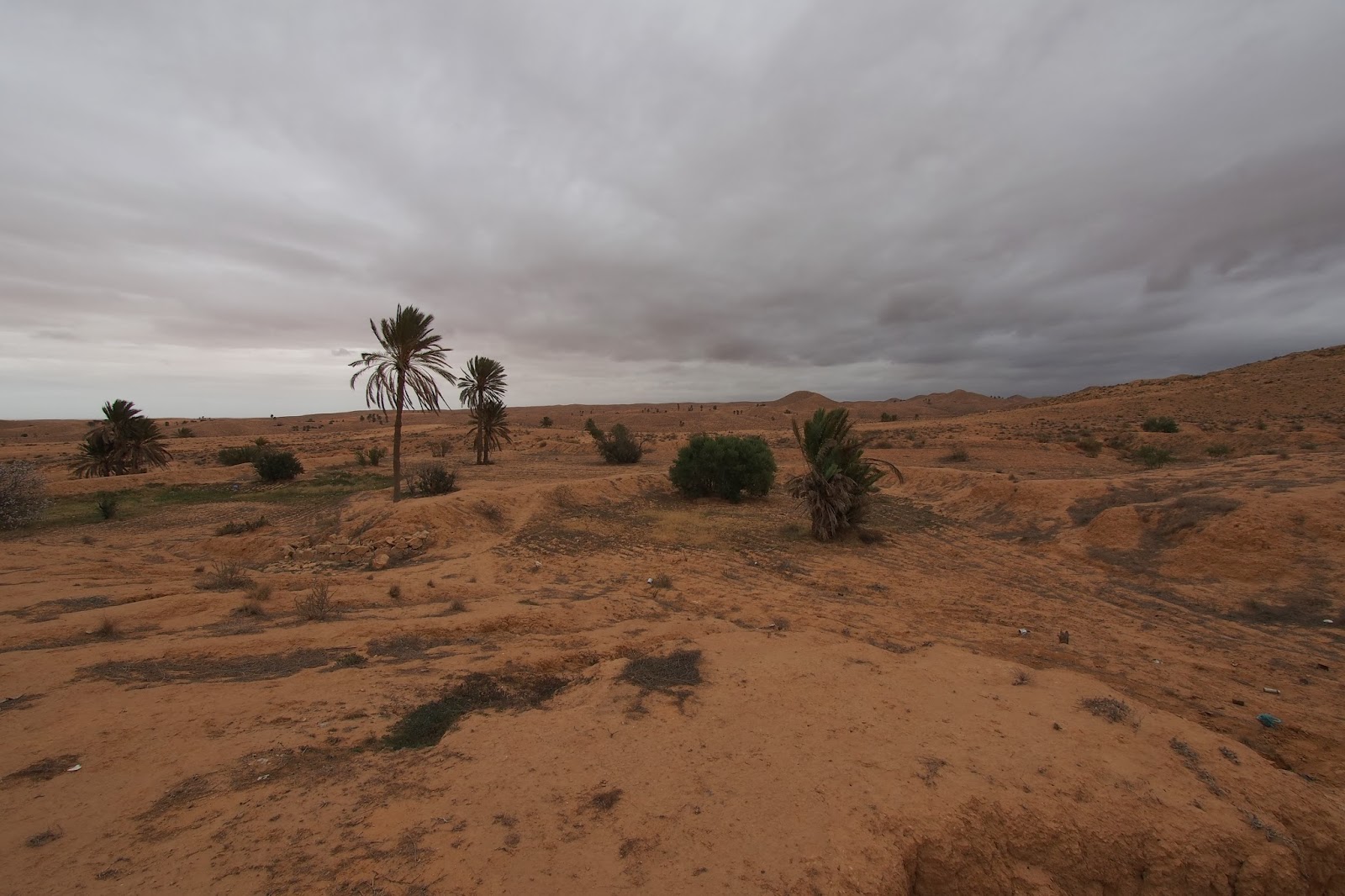












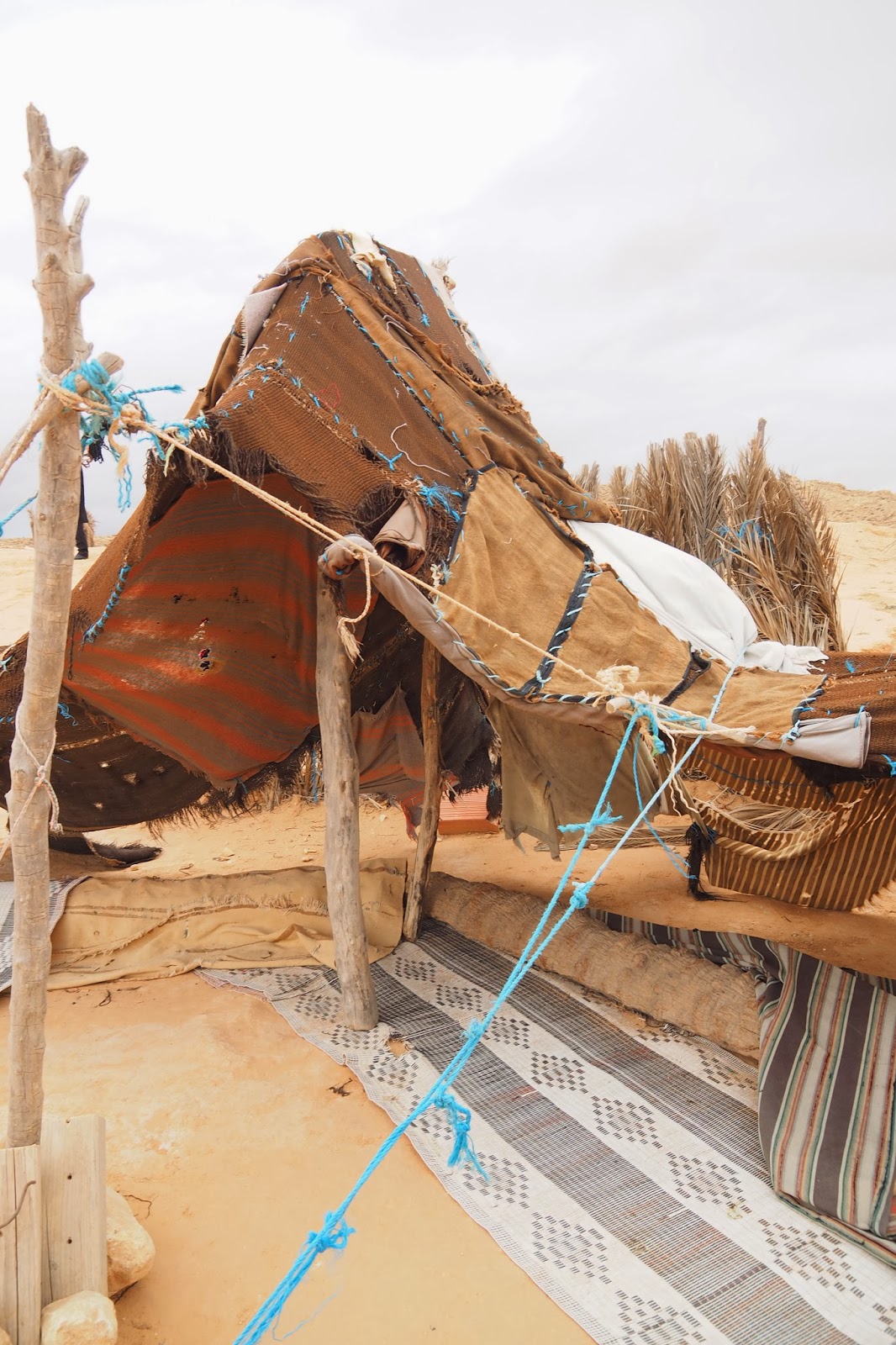



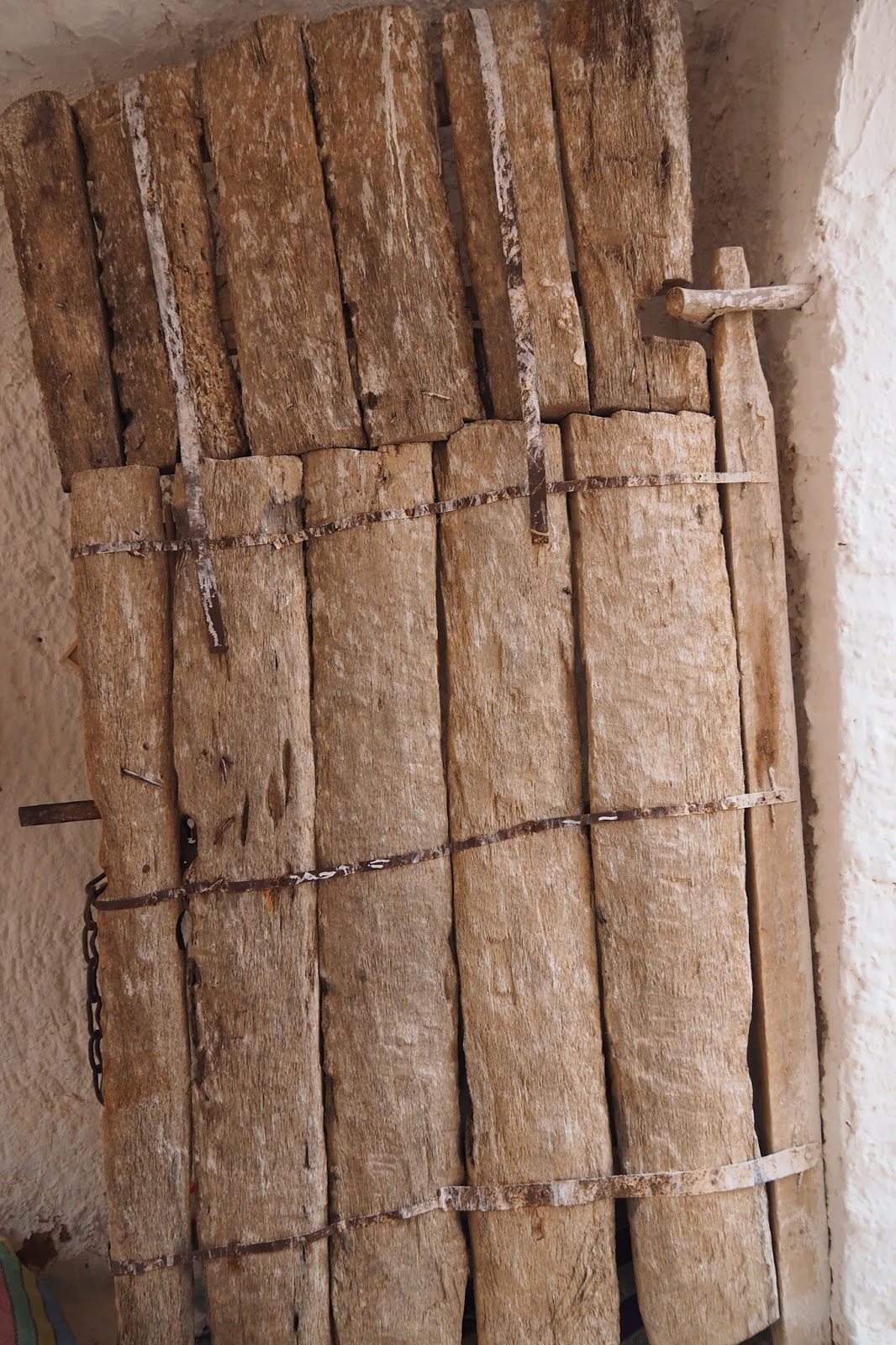























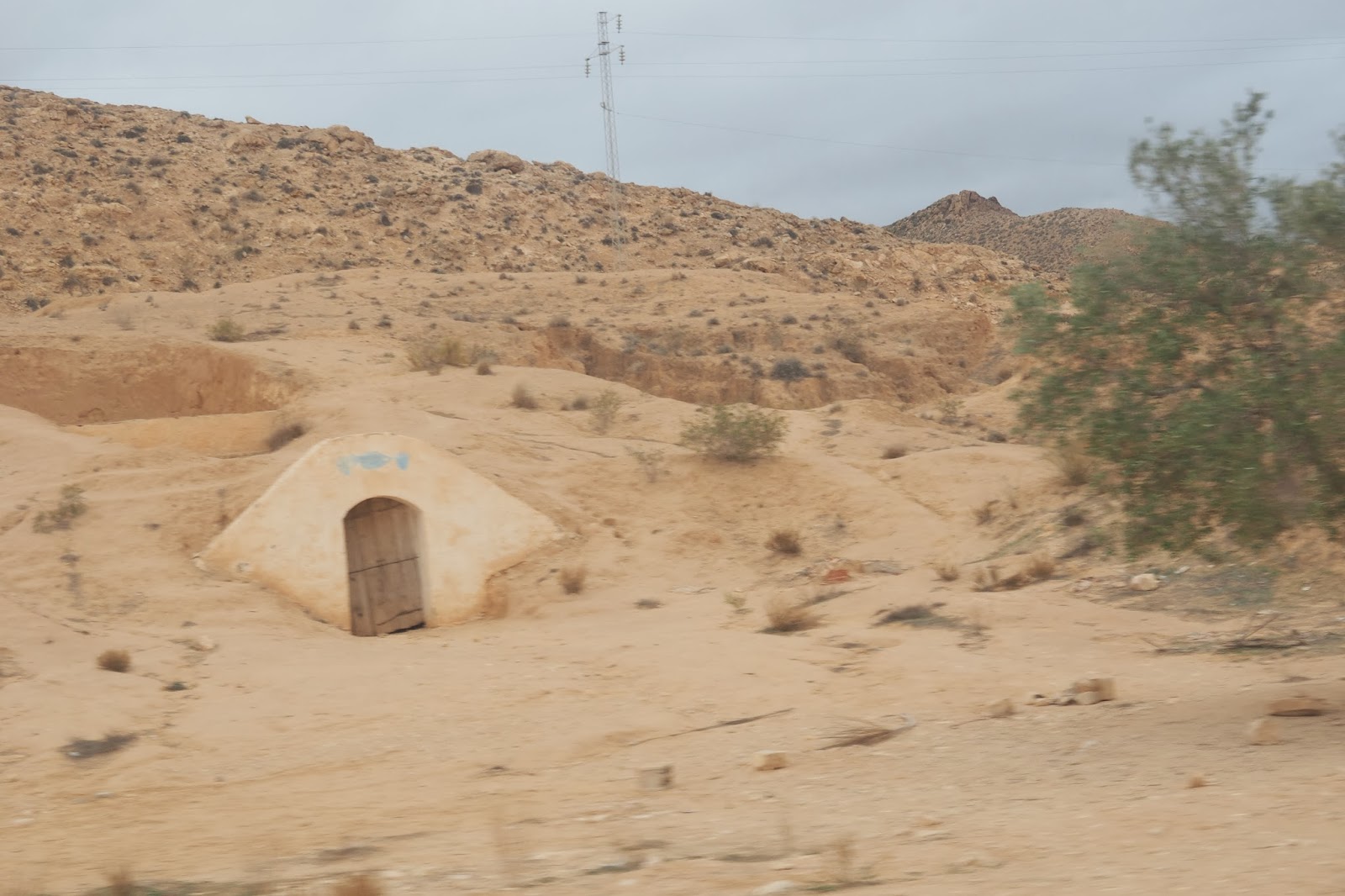

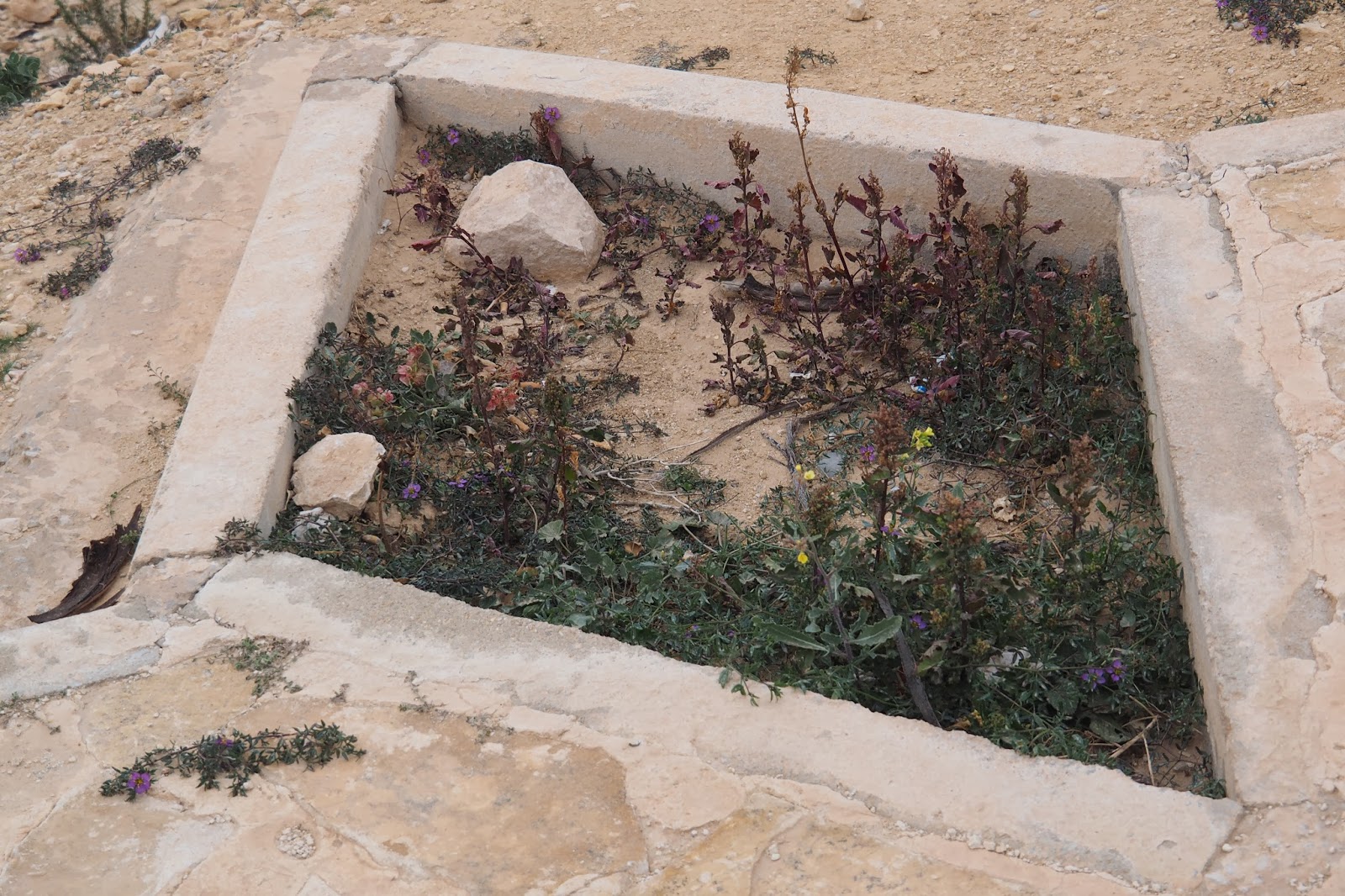






































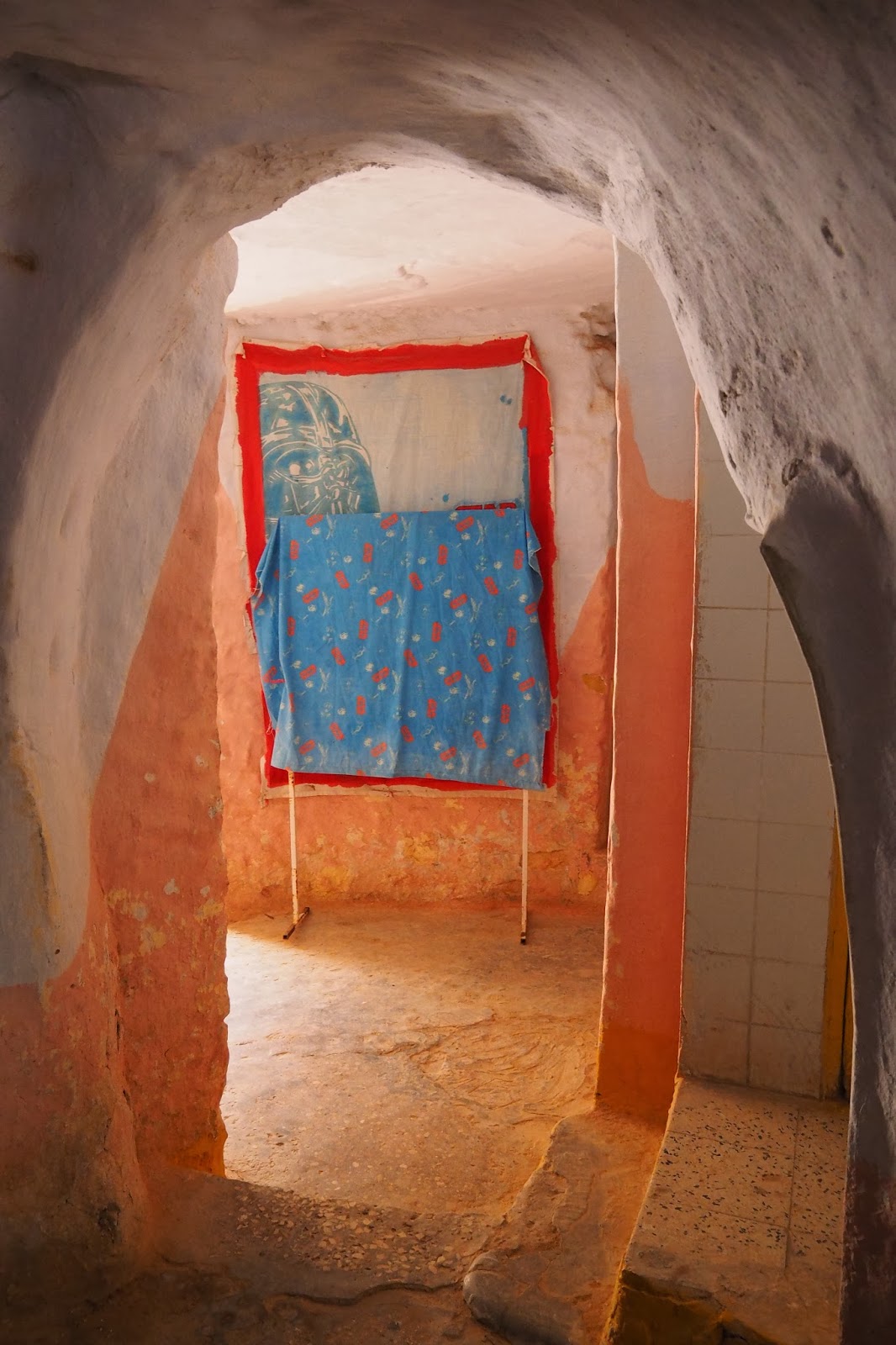











































沒有留言:
張貼留言